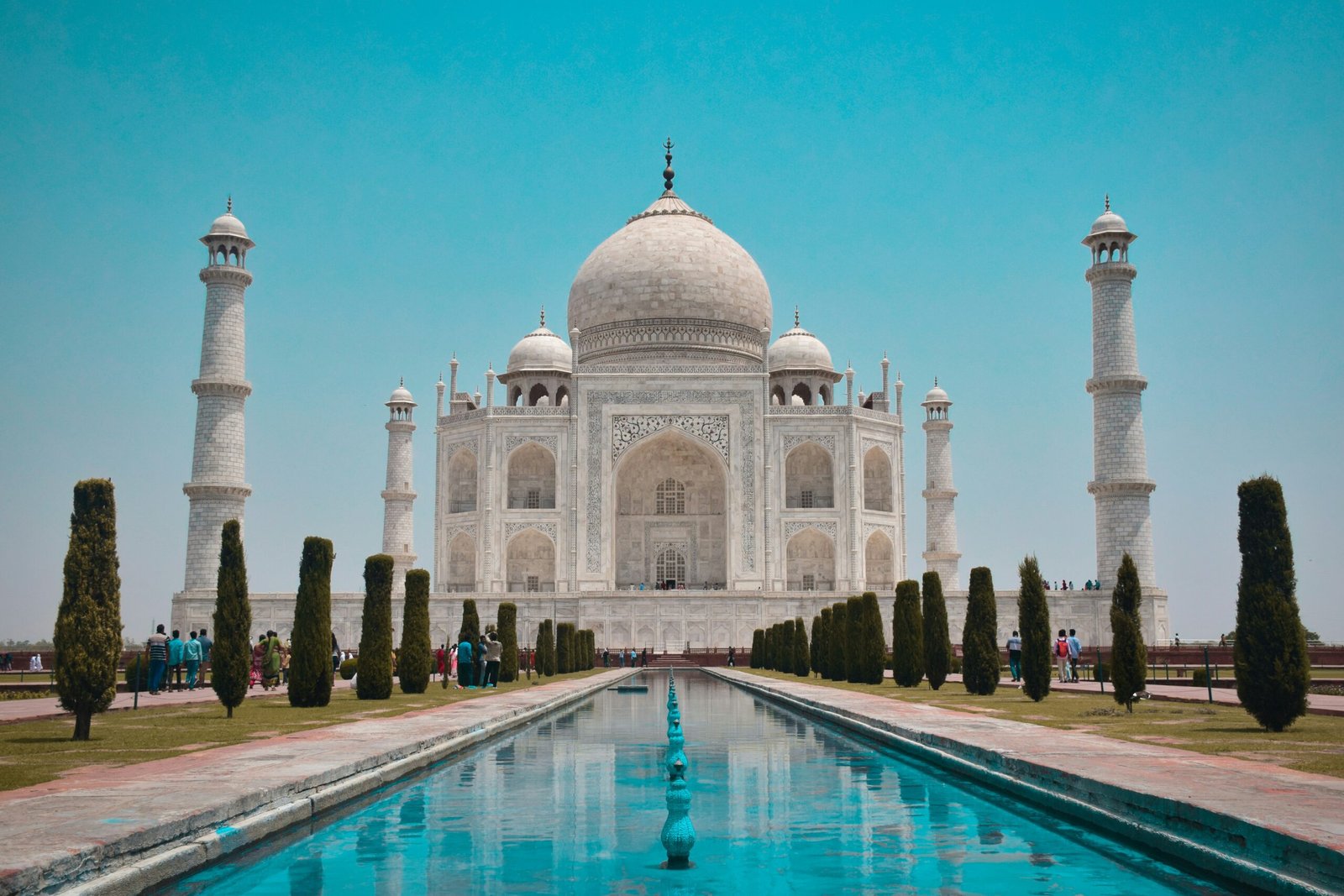The Dead Sea is one of the most spectacular places to visit when traveling to two countries sitting on its shores, Israel and Jordan.
So whether you want to visit the Hashemite Kingdom of Jordan or the State of Israel, we believe that the Dead Sea area is definitely worth including in your Israel itinerary.
Its unique properties make it one of the world’s natural wonders, and the water is renowned for its therapeutic effects.
And as there are plenty of things to do in the Dead Sea area, we believe that no visitor will leave this place disappointed.
We’ve been to the Dead Sea twice already and had a great time both times while there.
As we also wanted to know about the Dead Sea as much as possible ourselves before our trip to Israel, we’ve rounded up this blog post on the most interesting Dead Sea facts.

Where is the Dead Sea Located?
The Dead Sea is a landlocked salt lake between Israel and Jordan in the Middle East region (geographically southwestern Asia).
You will find Jordan east of the Dead Sea and Israel on the western side.
The Israeli side consists of two parts, the West Bank in the northwest and Israel itself in the southwest.
When we were in Ein Gedi, it was pretty exciting to watch the sun rising above the mountains on the Jordanian side.
Not only because sunrises are beautiful, but because we visited there Mukawir, from where we could see the Dead Sea last year.
Funnily enough, Mount Nebo near Madaba was the first place we spotted the Dead Sea and the Holy Land from.
Regardless of whether you want to spend a week in Jordan or two weeks in Israel, the Dead Sea is definitely worth visiting.
Is the Dead Sea a Sea?
As mentioned above, the Dead Sea is, in fact, a salt lake, not a sea. It’s a hypersaline water body fed by the Jordan River, which is often ranked as one of the saltiest ones in the world.
And as it’s an endorheic lake, the basin has no outflow retaining all water that comes into it. The Dead Sea is 304 meters deep, making it the deepest hypersaline lake in the world.
Reading the facts about the Dead Sea is so fascinating because each time you learn something new.
And not all mysteries have been explained yet, so the Dead Sea won’t stop to surprise us just yet.
Why is the Dead Sea called the Dead Sea?
The extreme saltiness of the Dead Sea is responsible for its name.
Simply put, the Dead Sea is so salty that no marine life can survive in this inhospitable environment. Therefore, you won’t find any fish, plants, seaweeds, or even birds living in it or very close to it.
As there is no visible life in the sea, the name the Dead Sea was given to this area.
Another interesting fact about the Dead Sea is that while many streams feed it, it has no outlets, so no water from it ever reaches the ocean.

Dead Sea
Why is the Dead Sea Called the Dead Sea?
The extreme saltiness of the Dead Sea is responsible for its name. Simply put, the Dead Sea is so salty that no marine life can survive in this inhospitable environment.
Therefore, you won’t find any fish, plants, seaweeds, or even birds living in it or very close to it.
As there is no visible life in the sea, the name the Dead Sea was given to this area.
Another interesting fact about the Dead Sea is that while many streams feed it, it has no outlets, so no water from it ever reaches the ocean.
Does Life Exist in the Dead Sea?
While the Dead Sea lacks the normal marine life that the naked eye can see, it’s not entirely dead.
In fact, life does exist in the Dead Sea. You just can’t see it unless you bring a microscope or dive deep enough.
Even though the Dead Sea is one of the most hostile environments in the world, scientists found algae and bacterium that can survive there.
While diving is pretty difficult in the Dead Sea, some divers managed to find several craters covered with rich and diverse films of bacterias.
But how is that possible?
Well, to a big surprise to a scientific community, the craters have freshwater springs that allow some simple forms of life to survive even in these conditions.
Why is the Dead Sea So Salty?
Scientists researched that the Dead Sea has a salinity of 34% and is almost ten times saltier than the ocean water.
Despite the fact that the Dead Sea region doesn’t receive much rainfall, it’s the rain that is responsible for the abnormal salt level in the water.
When the slightly acidic rain hits the rocks, mineral salts are released. The runoff water reaches the Dead Sea, eventually making it extra salty.
The Dead Sea is a closed lake that doesn’t flow into the ocean, so the evaporation causes the water to become highly salty.
Interestingly enough, the Dead Sea is so salty that the salt particles descend down the water and create crystal formations on the lake’s floor.
Can You Swim in the Dead Sea?
Yes and no. It almost seems if King Solomon answered himself. But jokes aside.
The act of swimming in the Dead Sea is not entirely impossible, and you can even do a few clumsy backstrokes.
However, it’s better to ask yourself why you would want to swim in the Dead Sea in the first place?
Quite frankly, the Dead Sea is a terrible place for swimming due to the density of the water, so it makes sense not to try your luck while there.
One of the basic rules of swimming in the Dead Sea is to keep your head above the water and avoid splashing. And that’s pretty hard to do so when you’re trying to swim.
Unless you’re a big fan of pain and crying, then we would recommend you to just float like everyone else.

Why is the Dead Sea Famous?
The Dead Sea is famous for several reasons, already mentioned throughout the article.
Firstly, it’s the lowest point on Earth. Highway 90 in Israel is considered to be the lowest road in the world, similar to the Dead Sea Highway in Jordan.
The Dead Sea is the saltiest lake in the world and has many health benefits.
The shores of the lake are home to some luxury hotels, and the whole area is a super popular travel destination.
Why is the Dead Sea Receding?
Despite being a top tourist destination in both Israel and Jordan, the Dead Sea is rather quickly disappearing.
The massive Dead Sea Works factories you can see in the south are only partly responsible for the ecological disaster.
The bigger problem is that the primary water source, the Jordan River, has been massively diverted in the past decades.
As less and less freshwater reaches the basin every year, primarily due to agriculture, it’s been shrinking rapidly.
With no real solution on the horizon, the future of the Dead Sea is not very bright.
A multi-billion-dollar Red Sea-Dead Sea project that should bring the water from the Red Sea back to the Dead Sea is probably just an expensive fantasy than reality. Let’s hear some facts.
In 1960, the Dead Sea sat at an altitude of 390 meters below sea level and covered about 1020 square kilometers.
Today, its surface area is only 605 square kilometers, and the water surface sits at an altitude of 430 meters below sea level.
The Dead Sea is swiftly disappearing, and the 2050 projections are bleak.
Unless something changes soon, the Dead Sea might be gone way sooner than the natural cycle dictates.
Does the Dead Sea Have Health Benefits?
Yes, scientists say that the Dead Sea is good for you, and the medical studies back their claims.
Therefore, people with varying health conditions such as psoriasis, rheumatism, or respiratory problems go to the Dead Sea to get better.
Evidence suggests that even ancient Egyptians and Romans knew already about the beneficial influence of high saline concentrate, minerals, and mud on a human body.
In fact, King Herod the Great built the palace in Masada so that he could have better access to the Dead Sea.
Moreover, the beauty benefits of the Dead Sea are a huge business now, and there isn’t probably a single tourist flying back home without a souvenir packed in their backpack.
Nowadays, a lot of modern hotels with spas and treatments are located on both sides of the Dead Sea shores, and thousands of visitors come here to seek the Dead Seas’ healing powers.
If you want to get the most of your trip to the Dead Sea and budget is not an issue, then places such as Kempinski Hotel Ishtar Dead Sea in Jordan or Vert Dead Sea Hotel in Israel will make sure that your stay will be unforgettable.

Is the Dead Sea in the Bible?
Israel is packed with biblical history, so you might wonder whether the Dead Sea appears in the Bible or not.
Yes, the Dead Sea is mentioned several times in Bible, including, for example, the Lot’s wife’s tale.
Lot’s wife was turned to a salt pillar by God when she couldn’t resist the temptation and turned around to see the destruction of Sodom and Gomorrah.
Also, David found a refuge in the oasis of Ein Gedi, which is located on the west shores of the Dead Sea, when he fled from King Saul.
And there is more. In today’s Qumran Caves, two thousand years old Dead Sea Scrolls were found.
These scrolls are the earliest known Hebrew Biblical documents and are often considered among the most important archaeological finds of all time.
As you would expect, the Dead Sea (usually referred to as the Salt Sea in the Bible) area played an important part even in ancient times, and places such as Masada or Ein Gedi were the witnesses of this period.
And by the way, the modern-day location of Sodom is near the Dead Sea Works factory in the southwest of the Dead Sea.
Nowadays, you can even visit this place, at least if you dare to go to this location that was cursed and destroyed by God himself.



